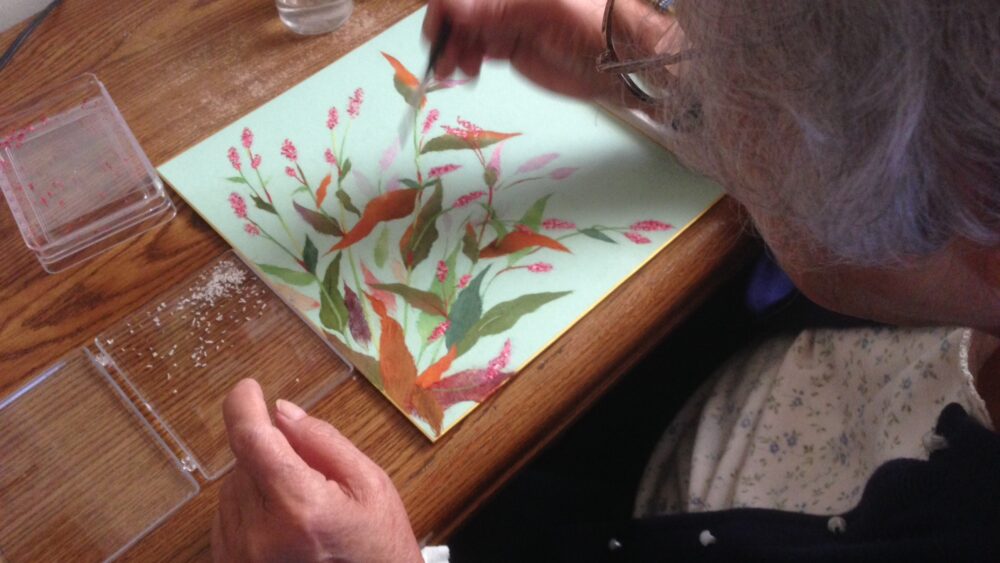VIRTUAL TOUR Artist Talk
Chigiri-e, pronounced chee – gee (“gi” as in geese) – ree – eh ( “e” as in Exeter), is a traditional Japanese art form dating from the Heian Period, 794 AD to 1185 AD. The Heian period was a very rich age for Japanese poetry, literature and art. The word chigiru means to tear and e is an image therefore an image produced by tearing pieces of specially made and dyed paper, washi.
The technique of Chigiri-e uses the unique characteristics of the washi paper taking advantage of its texture, malleability, coloring and ductile properties to produce a “collage.” The artist using her hands tears, wets, twists, stretches, separates fibers and applies the worked paper on another surface, traditionally paper scrolls or other paper media. Many works appear from a distance to be water colors but upon close examination, the “paper” qualities become apparent. Flowers or plant images are typical and traditional subjects but the subjects cover a wide spectrum.
Reiko Nakamura Yoshimoto currently resides in Monterey Park, California, a suburb of Los Angeles. She was born on December 5, 1928 in Hiroshima, Japan. She attended schools in Japan through high school. At a very early age in elementary school she was recognized for her artistic ability. In 1945, while in high school, she experienced and survived the atomic bombing of Hiroshima.
After World War II ended, she met Tadato Jim Yoshimoto, a U.S. Army Sergeant from Los Angeles stationed in Japan serving on General McArthur’s staff. In 1950 they were married and moved to the United States upon Jim’s discharge. She gave birth to a son, Bill, in 1951 and to a daughter, Grace, in 1955. She became a U.S. citizen in 1959. In the years between 1960 -1980 she was a stay at home seamstress and mother. In 1974 she began work as an electronics micro-component assembler. She retired in 1992.
Reiko Yoshimoto started taking classes in chigiri-e in 1993. Much of Reiko’s work is reproducing the classic art of many artists but in the medium of torn paper. Flowers from simple to highly textured and detailed to landscapes showcase the development of her skills.



Comments are closed.